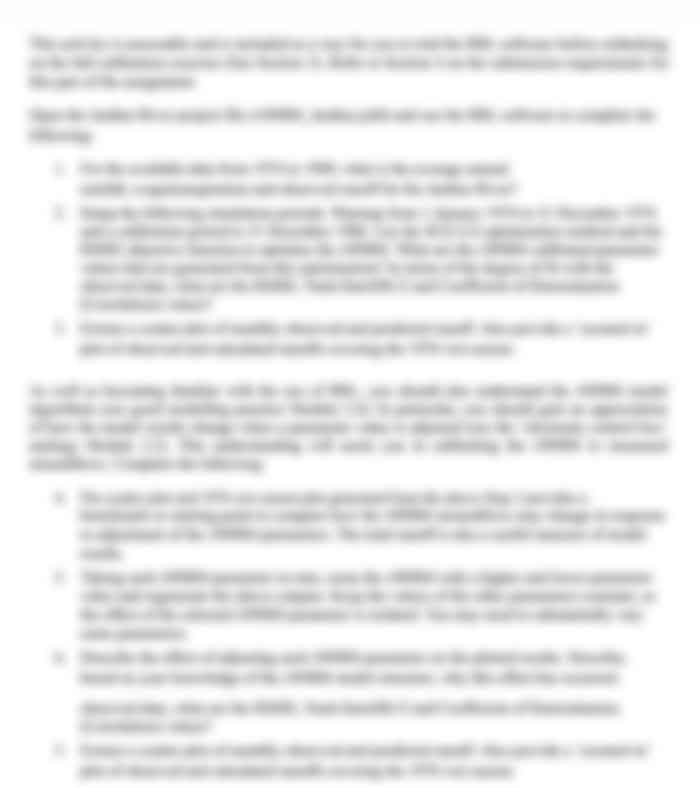Psychological Assessment Of Psychometric Traits
- Country :
Australia
Dataset Description
The data set being analyzed comprises the study of 49 candidates for recruitment to be emergency health workers. Each recruit was given a psychological assessment on the following psychometric traits (temperament and character inventory traits, TCIs) of
- Novelty seeking (NS) denoted by NSTCI
- Harm Avoidance (HA) trait denoted by HATCI
- Reward dependence (RD) trait denoted by RDTCI
- Persistence denoted (P) by PTCI
The aim of the study was to establish the best traits and their combination for the optimal choice of recruits for the job.
Question 1:Use the study context described above and the output of PROC UNIVARIATE below, its plots, and numerical values, to answer the following questions.
a) What are p and n in this multivariate data set analytic context? b) Write down the vector of sample means for the multivariate data (NS, HA, RD, P). c) On which of the four traits (TCIs) are the individuals scoring the highest? Justify your answers by numerical summary values shown in the output below. d) On which of the four traits (TCIs) are the individuals scoring lowest? Justify your answers by numerical summary values shown in the output below. e) For each variable (or trait, TCI) identify which individual in the study is the highest ranked individual and give their actual attained value for the trait. f) For each variable (or trait, TCI) identify which individual in the study is the lowest ranked individual and give their actual attained value for the trait. g) Which of the variables or traits (TCIs) are normally distributed if any? Justify your answer based on the plots and output provided, and state which plot and why. h) Briefly explain the concept of normal quartiles and how they are used below. i) Write down the vector of sample medians for the multivariate data (NS, HA, RD, P).
Question 2:Using the SAS code and outputs below, answer the following questions.
a) Which pair of variables is the most positively correlated and gives the associated correlation and p-value? b) Which pair of variables is the most negatively correlated (if any) otherwise the least correlated and give the associated correlation and p-value? c) What is the null hypothesis used in PROC CORR? d) Name the parameter being tested and its value under the null in PROC CORR.
Question 3:The ODS graphic code below uses PROC CORR to create both 70% and 90% prediction ellipses for the specified variables.
a) What is the centroid of the ellipse written as a numerical vector? b) How many outliers are there with respect to the 70% and the 90% prediction ellipse? c) Hypothetically, if the prediction ellipses were created for 80% and 90%, how would the coverage change? d) Briefly explain what alpha relates to with respect to the prediction ellipses drawn. e) Using the outputs in Question 1 and Question 2 calculate Hotellings T2 statistic which is traditionally used to test for a hypothetical null value for 0 = [1.53, 1.64]. HINT: Give the equation for T2 and show all your working, formula, and the calculated value showing all your steps.
Question 4:Using the 2 sets of codes and outputs below answer the following questions succinctly.
a) What are the aims of the 2 sets of codes and the analysis performed in terms of the variables analyzed? b) Write down the steps and what the 2 proc procedures do below with some explanation. c) What does mahala denote and write down its mathematical formula? d) Report how many observations are outside the ellipse, and how many observations are smaller and inside the ellipse. e) What conclusions can you make based on the number of observations inside and outside the ellipse? f) Explain briefly how the ?22(0.5) =1.39 value in the SAS code relates to distribution in this procedure? g) What is p for the mathematical formulation used in the code below for the analyses in this question?
Question 5: Use the SAS code and the output below to answer the following questions.
a) What variables are being analyzed in the procedure below? b) Explain the steps and what the procedure does in the code below. c) What conclusions can you make from the plot below? Give justification for your answer.
Question 6:From the sample mean vector and sample covariance matrix obtained in Question 1 and Question 2 derive and show the formula and you're working out to determine the mean and the variance of the following new difference variable NSTCI - PTCI.
Question 7: Part 1.Use the code and output below to answer the following questions.
a) Which difference variable of the newly created variables is most positively correlated (if any) to which of the original TCI variables (NSTCI, HATCI, RDTCI, PTCI)? Give the associated correlation and p-value. b) Which difference variable of the newly created variables is most negatively correlated (if any) to which of the original TCI variables (NSTCI, HATCI, RDTCI, PTCI)? Give the associated correlation and p-value. c) Which pair of different variables is most positively correlated to which other difference variables, and give the associated correlation and p-value? Is the correlation statistically significant and why? Explain why you think a positive correlation is to be expected in this case, or not. d) Which pair of different variables is most negatively correlated (if any) to which other difference variable and give the associated correlation and p-value? Is the correlation statistically significant and why? Explain why you think a negative correlation is to be expected in this case, or not. e) What is p for the mathematical formulation used in the SAS code for the analysis in this question
Question 7: Part 2.What is being tested for in the following code and analysis?
a) What is p for the mathematical formulation used in the code below for the analysis? b) What conclusions can you make from the plot below? Give justification for your answer. c) Compare the plot produced by proc splot data= chip lot at the end of this question below with the plot reported in question 5. What can you conclude about the distributions by comparing the plots?

